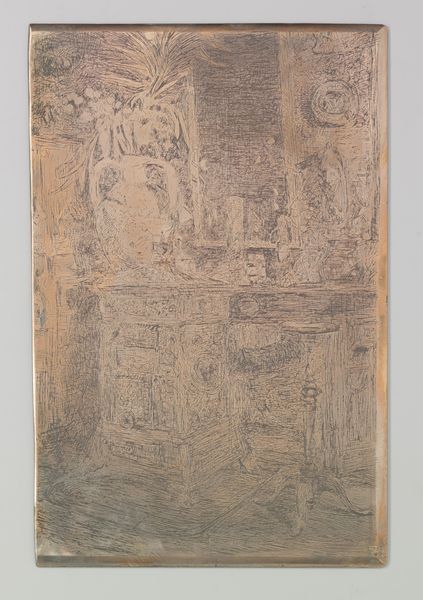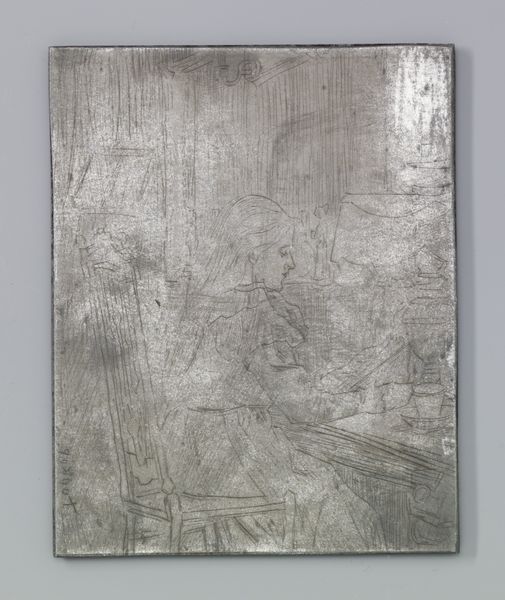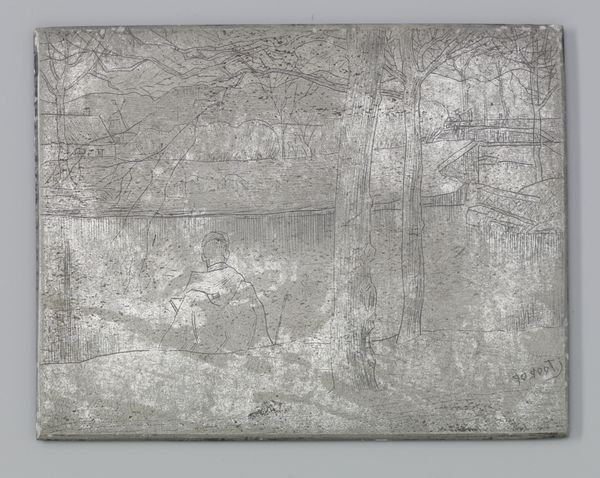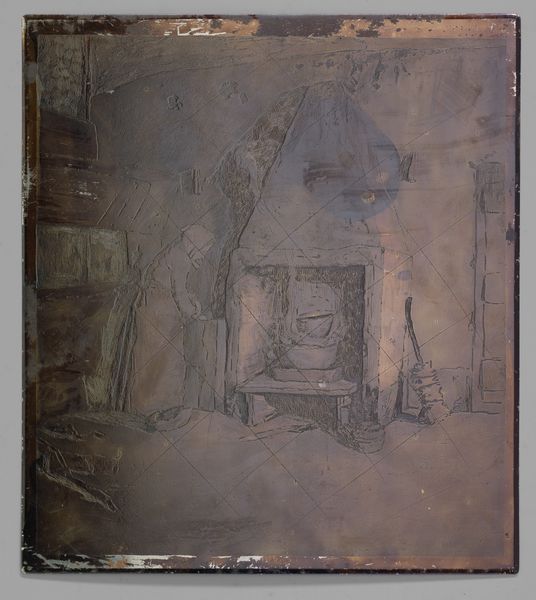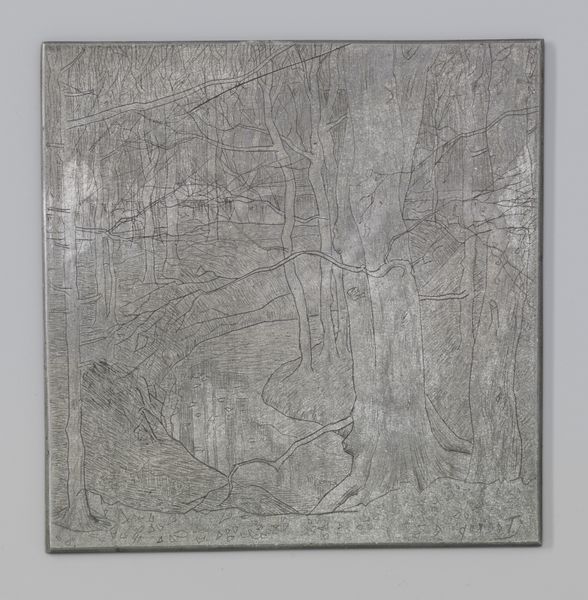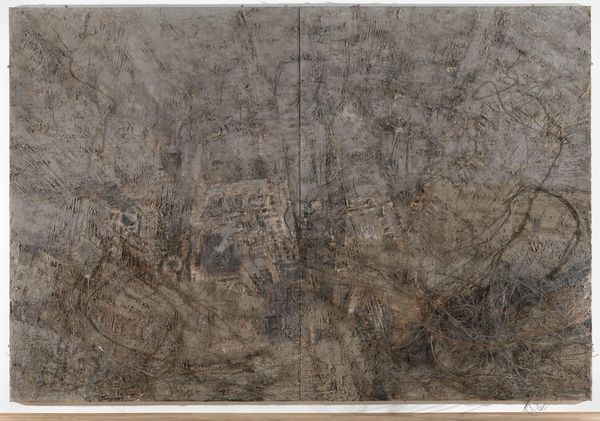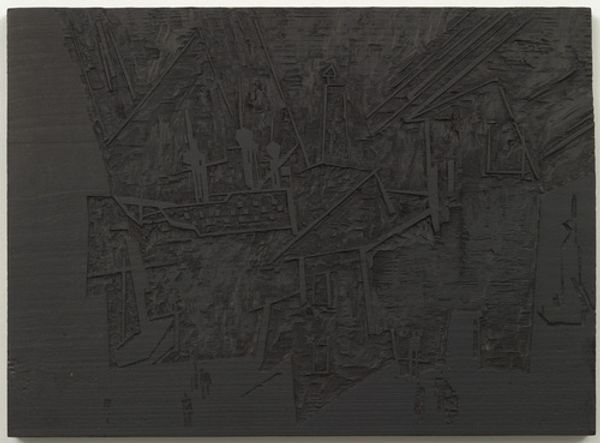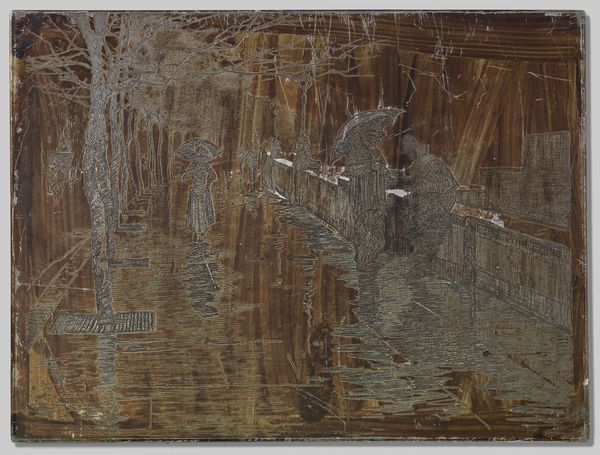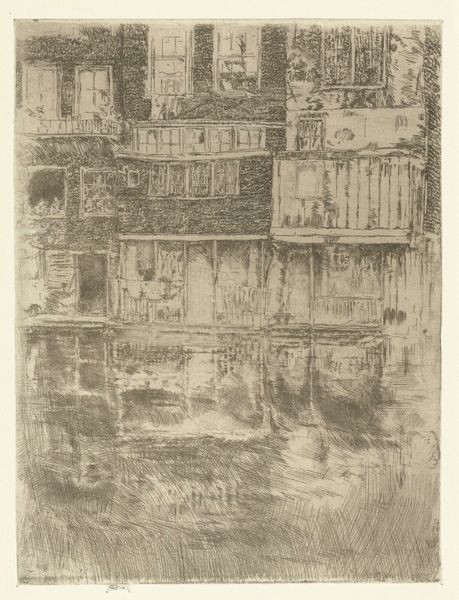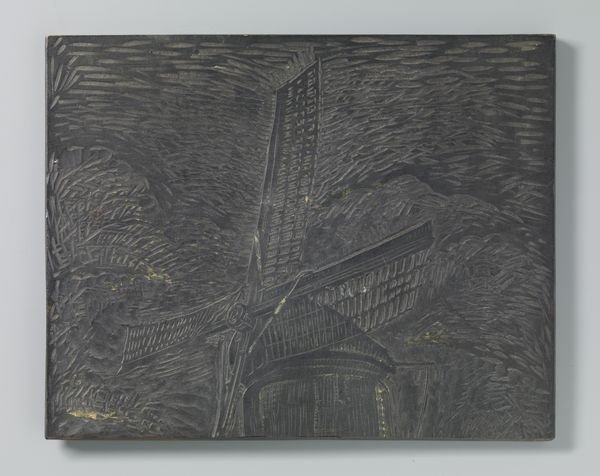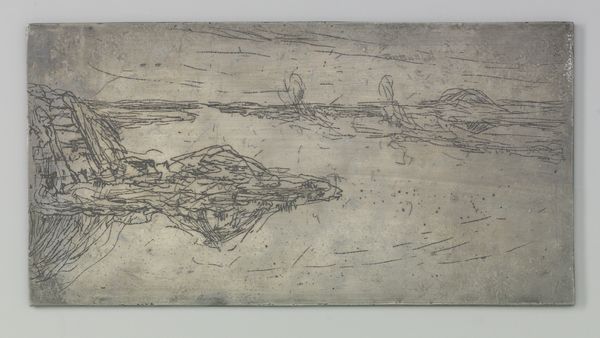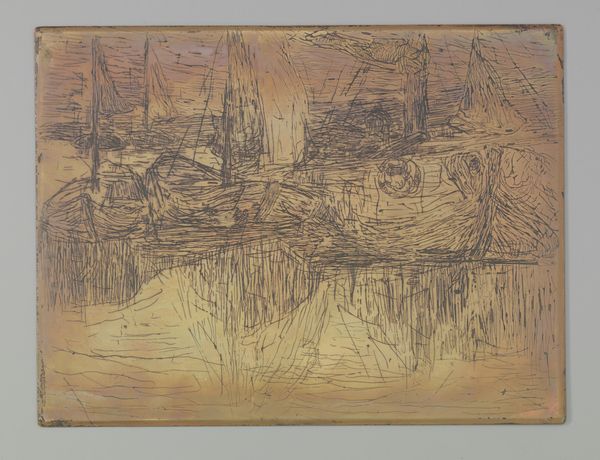
Dimensions: height 203 mm, width 152 mm
Copyright: Rijks Museum: Open Domain
Isaac Israels likely made this depiction of the Gasthuismolensteeg in Amsterdam as a plate for printing, using etching techniques. This printmaking method involves covering a metal plate with a waxy, protective layer, drawing an image with a sharp needle, and then immersing it in acid. The acid bites into the exposed lines, creating grooves that hold ink, which is then transferred to paper. Israels work has a distinctive graphic quality. Look closely at the composition, which utilizes line and tone to evoke the street. Etching is a medium that sits in an interesting place between craft and the fine arts. While closely associated with major artists, prints are inherently reproducible, which places them in an ambiguous economic position. Are they precious, original works or proto-industrial products? Consider the labor-intensive process required to produce an etching, and the political implications of the medium itself. In its capacity for replication, print media democratizes art, making it accessible to a wider audience beyond the wealthy elite.
Comments
No comments
Be the first to comment and join the conversation on the ultimate creative platform.
